
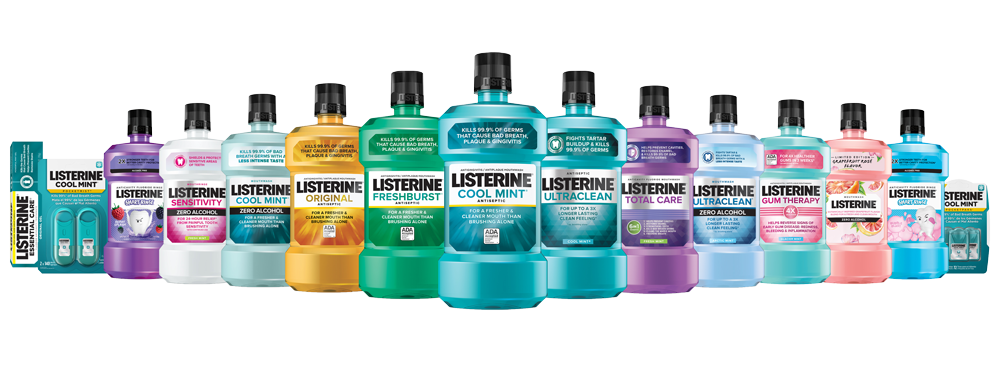

Licensed professionals can receive the latest Listerine clinical information and patient resources.

WHAT TYPES OF PATIENTS DO YOU SEE IN YOUR PRACTICE?
There’s a wide range of patients visiting dental offices today—from children just starting their dental journey, to adults with very specific oral care needs, to older patients taking medications that may impact their oral health. There are significant differences between patient types. But what is it that they all share in common?
Kids from birth to age 12…
For young patients in the United States, tooth decay is actually the #1 chronic infectious disease—and it’s still on the rise1:
- Approximately 37% of children ages 2-8 years old had dental caries in their primary teeth in 2011-20122
- By age 5, about 60% of children in the United States will have tooth decay—40% of those children will enter kindergarten with cavities1
- And over 50% of children ages 6-8 years old have had cavities2

And that’s just the beginning. Without proper oral healthcare, infants and young children at risk for dental caries grow up to be adolescents and adults with oral health issues—sometimes serious ones.3
Pregnant women…
You know how important it is for women to maintain oral health during pregnancy, and throughout their lives.4 The health of their teeth and gums, especially during pregnancy, could affect the growth of their baby.5
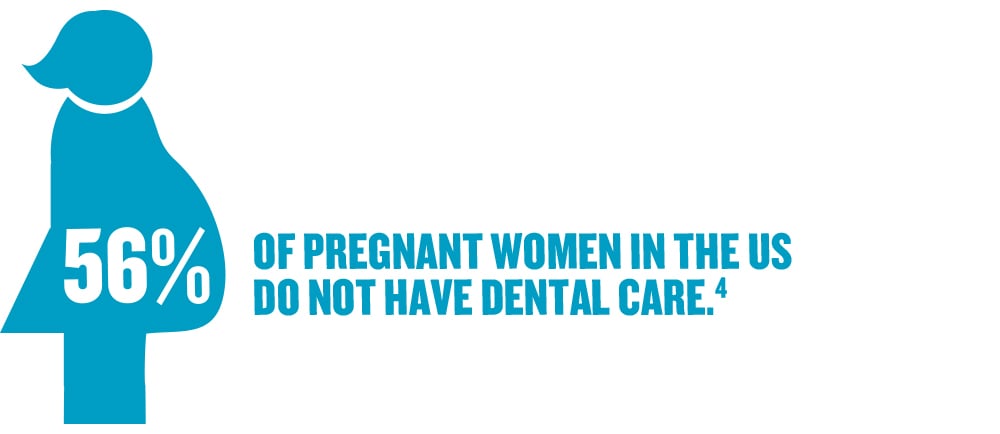
- A postpartum survey across 10 states revealed that approximately 56% of pregnant women did not have dental care4
- And 4 out of 10 pregnant women have tooth decay or some form of gum disease5
- Some women mistakenly believe that they should not receive dental care during pregnancy; and more than 75% of surveyed obstetricians and gynecologists reported that they had patients who were actually declined dental services because of pregnancy5
People with Diabetes…
Your patients with diabetes are more likely to develop oral health problems than those without diabetes.6 The most common of these problems include7,8:
- Tooth decay
- Caries
- Gingivitis
- Periodontal disease
- Glandular issues
- Fungal infections
- Skin irritation and inflammation
- Infection and delayed healing
- Changes in taste
Seniors…
For older patients, there is a high prevalence of periodontal disease.
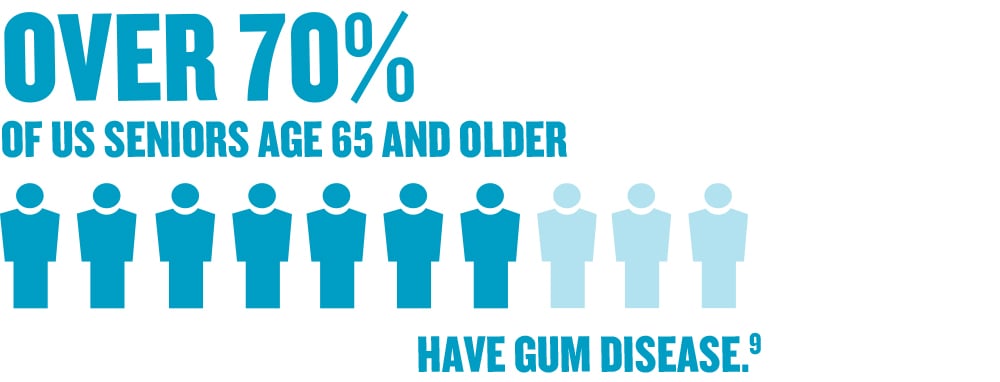
- 70.1% of people in the US age 65 and older have periodontitis; it is more common in men than women9
- More than 400 of the most commonly used medications by seniors can cause dry mouth10,11
- Seniors are also prone to denture-related inflammation/infection. If dentures don’t fit properly, yeast can collect in the moist areas of the mouth, leading to cheilitis and stomatitis12
So what is it all these patients have in common?
These patients all share the need for good oral hygiene, like brushing and flossing to keep bacteria in their mouths under control.13 Rinsing with an ADA-accepted mouthrinse can also help to meet this common need.
For every type of patient, there is a LISTERINE® oral health product specially formulated and designed with their specific needs in mind. At the LISTERINE® Brand, we believe that as different as every patient may be, they should all have equal access to quality oral healthcare—and we pride ourselves in bringing you a range of products as diverse as your patients. Please explore our LISTERINE® products, sortable by patient need, by clicking here.
And see how you can best meet the specific requirements of every patient type you see.
We hope you found this article of value.
EXPLORE OUR PRODUCTS.
Find out which LISTERINE® products meet the needs of your different types of patients.
GO BEYOND BRUSHING
Read why LISTERINE® products are an essential part of a complete oral care regimen.
PREFERRED MEMBER PRICING ON LISTERINE® PRODUCTS.
Members are entitled to special offers and pricing on LISTERINE® products for their office.
LISTERINE® and Patient Types Footnotes
References:
1. American Academy of Pediatric Dentistry. The state of little teeth. http://www.aapd.org/assets/1/7/State_of_Little_Teeth_Final.pdf. Accessed November 9, 2015.
2. Dye BA, Thornton-Evans G, Li X, et al. Dental caries and sealant prevalence in children and adolescents in the United States, 2011-2012. Centers for Disease Control and Prevention; NCHS Data Brief. March 2015;19:1-8. 3. U.S. Department of Health and Human Services. Health Resources and Service Administration. Do children have unique needs in the area of oral health? How is oral health relevant to overall health? https://www.hrsa.gov/healthit/toolbox/Childrenstoolbox/PediatricOralHeal.... Accessed July 14, 2015. 4. American College of Obstetricians and Gynecologists. Oral health care during pregnancy and through the lifespan. Accessed August 17, 2016. 5. Children’s Dental Health Project. Oral health & pregnant women resource center. https://www.cdhp.org/resources/320-oral-health-pregnant-women-resource-c.... Accessed December 15, 2015. 6. American Dental Association. Diabetes: tips for good oral health. J Am Dent Assoc. 2010;141:926.
7. The relationship between oral health and diabetes mellitus. J Am Dent Assoc. 2008;139;19S-24S. 8. American Dental Association. Diabetes and oral health. J Am Dent Assoc. 2002;133:1299. 9. Centers for Disease Control and Prevention. Periodontal disease. Accessed December 15, 2015.
10. Centers for Disease Control and Prevention. Oral health for older Americans. Accessed July 29, 2015. 11. Mayo Clinic. Dry mouth: causes. https://www.mayoclinic.org/diseases-conditions/dry-mouth/basics/causes/c.... Accessed August 8, 2015. 12. WebMD. Solutions to common denture problems. https://www.webmd.com/oral-health/guide/common-denture-problems?page=2. Accessed July 30, 2015.13. Mayo Clinic. Healthy lifestyle: adult health. https://www.mayoclinic.org/healthy-lifestyle/adult-health/in-depth/denta.... Accessed July 30, 2015.




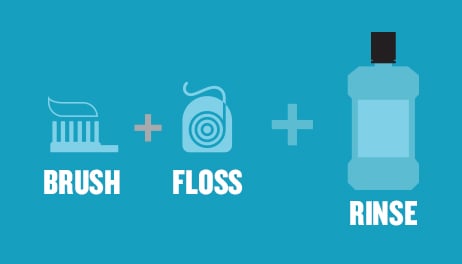

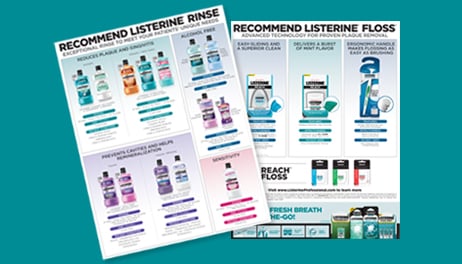
All Fields required, unless otherwise indicated
Personal Information
Step 1
Will be used as your user name
By submitting your information above, you agree that the information you provide will be governed by our site's Privacy Policy.